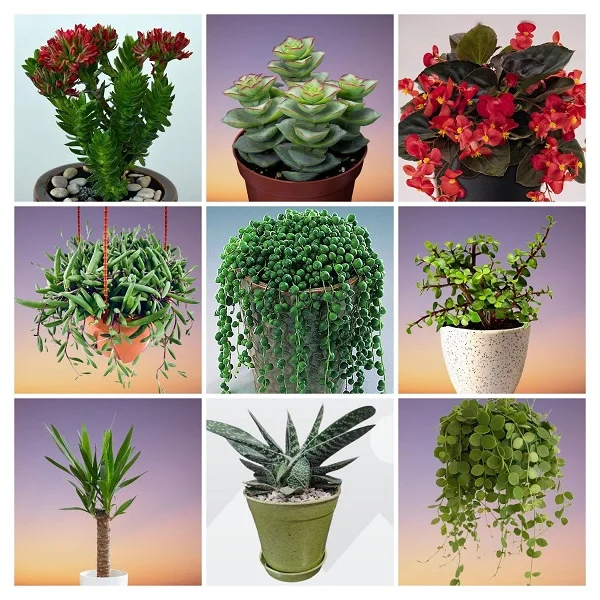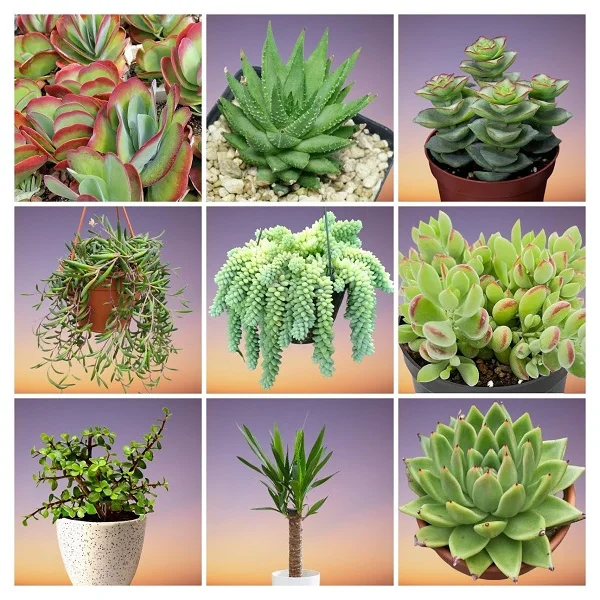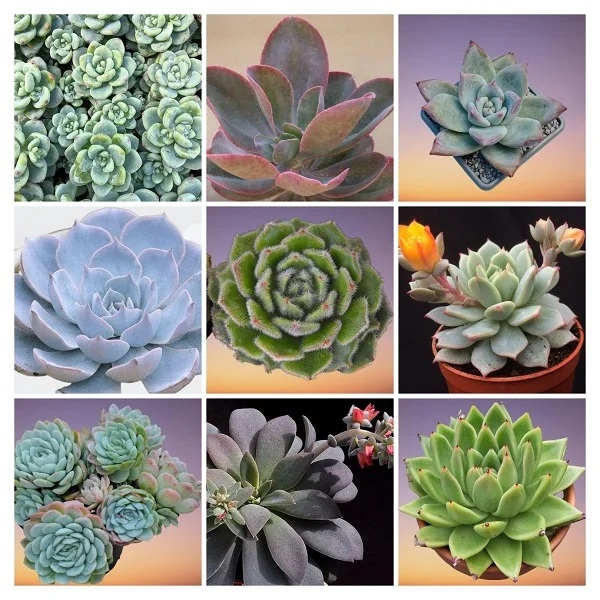How to Grow, Care and Propagate Haworthia Plants
Some links in this post may be affiliate links
Haworthia grow best in bright light with some direct sunlight, average warmth, moderate humidity and slightly moist, fertile, well-drained, succulent's soil coupled with monthly feeding in the growing season.
Haworthia Plants are some of the popular succulent plants that you can grow in the home. Some Haworthias have firm, tough, fleshy leaves, usually dark-green in color while others are softer and contain leaf windows with translucent panels through which sunlight can reach internal photosynthetic tissues.
The Haworthia Plants resemble miniature Aloes except in their flowers which are distinctive in appearance, white and small. The size of the rosette of leaves varies between 1.2-12 inches in diameter which places Haworthia among the best plants for limited spaces like an office desk, study table among others.
The succulent leaves store water and allow these plants to survive well in drought conditions which makes Haworthia some of the best plants with low water needs.
Being sun-loving plants with low water needs, places Haworthia among the best low-maintenance plants for a sunny balcony.
However, when these plants are stressed like when deprived of water for too long, their color can change to reds and purple. If deprived of nitrogen the leaves become paler.

Haworthia fasciata
Botanical name: Haworthia
Family: Asphodelaceae
Sufamily: Asphodeloideae
Origin
Haworthia Plants are endemic to Southern Africa; Mozambique, Namimbia, Lesotho, Swaziland and South Africa.
Varieties
Some popular types of Haworthia for indoors include Haworthia attenuata, Haworthia pumila, Haworthia papillosa, Haworthia fasciata, Haworthia reinwardtii, Haworthia cooperi among others. Check out these popular Haworthia succulents perfect for growing indoors.
Toxicity
Haworthia Plants are non-toxic to both humans and pets. They are among the pet-safe plants that are grown in the home.
Related Plants
Haworthia genus is closely related to the genera Aloe and Gasteria. The species of these genera are known to hybridise relatively easily with each other.
Where to Buy
If you are looking to add the spectacular Haworthia plants to your collection. Check them out online on Amazon (Link to Amazon).
Haworthia Indoor Care
The best conditions for Haworthia are bright light with 6-8 hours of direct sunlight, average warmth of 18-260C, moderate humidity of 50-55% and slightly moist, fertile, well-drained, succulents soil coupled with monthly feeding during the growing season.
Haworthia require annual repotting to thrive. Pruning is needed to keep the plant neat as well as reduce pest and disease infestations. Keep reading for more on these growing conditions and how to provide them.
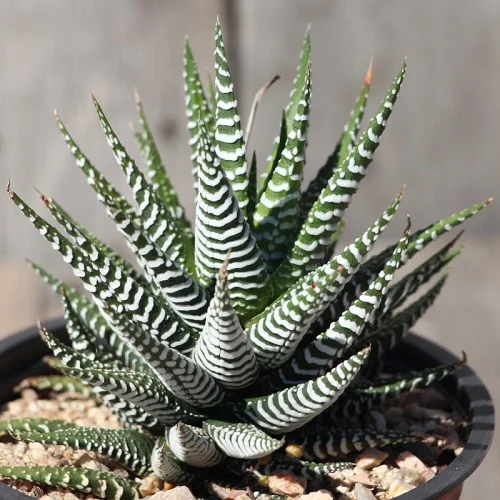
Haworthia attenuata
Light Requirements
Haworthia grow best in bright light with 6-8 hours of morning or late afternoon direct sunlight. Keep them away from hot midday sunshine as it can scorch the leaves.
If the natural lighting is not adequate, you may grow the plant under a grow light to supplement it as bright light is necessary for lush growth. Take a look at these full spectrum grow lights on Amazon.
Regularly rotate the pot to ensure that the plant receives adequate light on all sides to prevent lopsided growth.
Should you choose to take your Hawothia outdoors, acclimate it gradually and place it in a shaded place to avoid scorching.
Watering
Water Haworthia thoroughly during the growing season until water comes out through the drainage holes but allow the soil to almost dry out between waterings.
Significantly, decrease watering in the cold season as growth is minimal at this time but do not let the soil dry out completely.
Ensure that the pot has a drainage hole to prevent the soil from getting soggy as it can lead to root-rot disease.
Avoiding wetting the leaves as it can lead to rotting or water from the bottom instead. Use water that is at room temperature to avoid plant shock as it can result in stunted growth.
Temperature and Humidity
Average warm temperatures from 18-260C are ideal for Haworthia Plant. The sudden change in temperature between day and night is excellent for this succulent plant as it mimicks its natural arid conditions.
Haworthia Plants have no need for high humidity. Average room humidity of 50-55% is ideal for this plant. Ensure that there is good air circulation to avoid fungal disease infestations.
Potting Medium
The best potting medium for Haworthia is fertile, loose and free-draining to prevent it from getting soggy. It should be loose enough to allow water to drain out fast enough. Cactus and succulents potting mixes are ideal for Haworthia. Check out these
Fertilizer
Feed Haworthia Plant monthly during the growing period with a balanced, water-soluble fertilizer for lush growth. Withhold feeding during the cold season as growth is minimal at this time.
Repotting
Repot Haworthia Plant once every year at the beginning of the growing season as this will ensure a healthy and vigorously growing plant.
Use a shallow rather than a deep pot for Haworthia Plant as it has shallow roots. A clay pot is preferable because it is porous and therefore allows the soil to dry out faster.
The pot for Haworthia Plant should be only 1 size larger than the current one. Confirnm that the pot has a drainage hole to prevent the soil from getting soggy as it can lead to rotting. Check out these ceramic pots with drainage holes and saucer available on Amazon.
Pruning
Pruning Haworthia Plant only requires removal of dead or diseased leaves to maintain the plant tidy as well as discourage pest and disease infestations. Cut the leaves at the base with a sharp, sterilized knife or pair of pruning scissors to detach them from the stem. As much as possible avoid excessive injury to the plant.
Propagation
Haworthia Plants can be propagated at the beginning of the growing season from offsets (pups) which form at the base of the plant.
How to Propagate Haworthia Plants from Offsets
Seperate the Haworthia offset from the mother by cutting with a sharp knife or a pair of scissors to avoid excessive injury to the plants. Select an offset which has several leaves.
Allow the offsets to dry (callus) for 1-3 days before potting to prevent rotting.
Plant the offset in free-draining soil and ensure the pot has a drainage hole to prevent the soil from getting soggy as it can lead to rotting.
Place the set up in a warm, brightly lit spot away from direct sunlight.
Water sparingly, only when the soil is dry and avoid soggy soil as it can lead to root-rot disease and eventual death of the plant.
Allow the new Haworthia Plant to be well established after which you can begin routine care.
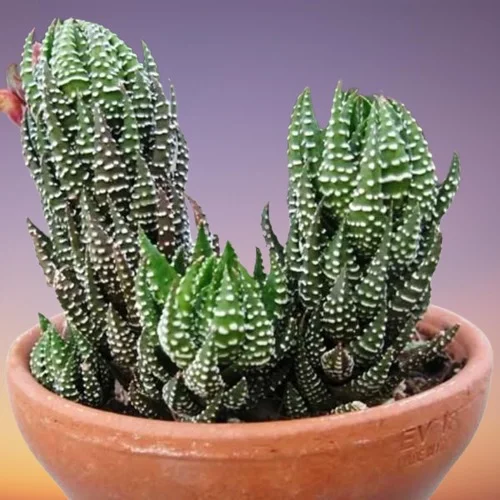
Haworthia reinwardtii
Haworthia Plant Problems Indoors
Haworthia Plants problems indoors include wilting and drooping leaves, leaf spots, rotting, discoloration, pests and diseases among others. Keep reading for more on these problems, their remedies and solutions.
Pests
Haworthia Plant pests are scales and mealy bugs. Isolate the affected plant to prevent spread to other plants and treat it with neem oil as per the manufacturer's instructions.
Brown soft spots
Brown soft spots in Haworthia Plant are an indication of leaf spot disease which is promoted by poor air circulation. Always ensure that there is good air circulation to minimize infestation by this disease. Learn how to treat leaf spot disease in indoor plants.
Wilted and drooping leaves
Haworthia Plant wilted and drooping leaves are due to underwatering. Immediately water the plant thoroughly and it should recover. To prevent wilting and drooping, water the plant liberally during the growing season while allowing the soil to almost dry out between waterings. Cut down on watering during the cold season as growth is minimal at this time but never allow the soil to dry our completely. Learn more on how to water indoor plants the correct way.
Rotting base, yellowing and shriveled leaves
Haworthia Plant rotting at base followed by yellowing and shriveled leaves are an indication of basal stem rot disease due to overwet conditions. Remove and discard the infected parts to prevent spread to the rest of the plant.
Significantly reduce watering during the cold season as growth is minimal at this time to keep the soil slightly moist. Use a fungicidal solution ocassionally to prevent infection and water the Haworthia from bottom to avoid wetting the foliage.
Wilted and discolored leaves
Wilted and discolored in Haworthia Plant are caused by overwatering during the cold season. Water the plant very infrequently during the cold season and always allow the soil to almost dry out between waterings.
You liked it? Share on social media.
Related Content
Amazon Associates Disclosure
Homeplantsguide.com is a participant in the Amazon Services LLC Associates Program, an affiliate advertising program designed to provide a means for sites to earn advertising fees by advertising and linking to amazon.com.



